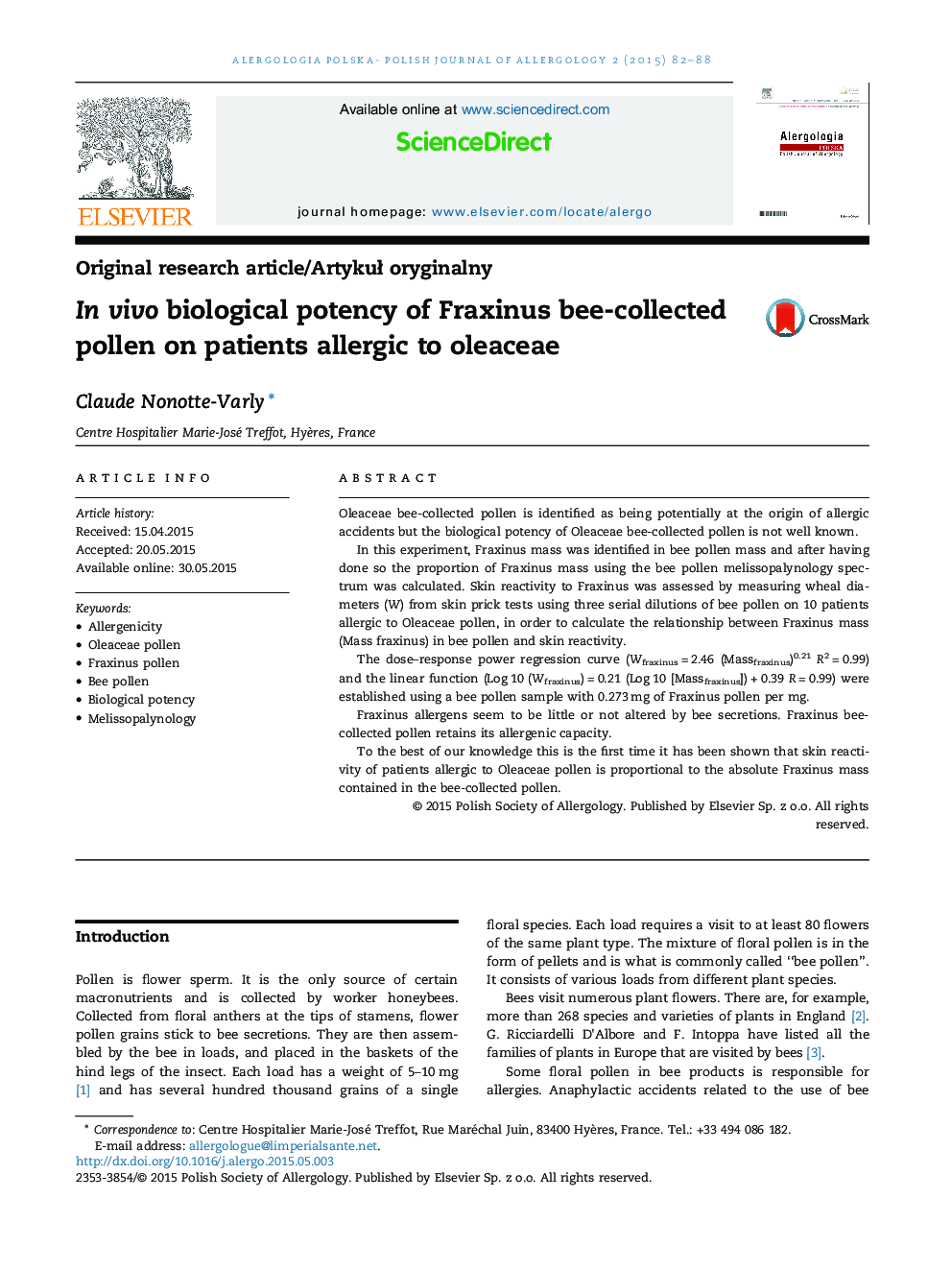| Article ID | Journal | Published Year | Pages | File Type |
|---|---|---|---|---|
| 3184319 | Alergologia Polska - Polish Journal of Allergology | 2015 | 7 Pages |
Oleaceae bee-collected pollen is identified as being potentially at the origin of allergic accidents but the biological potency of Oleaceae bee-collected pollen is not well known.In this experiment, Fraxinus mass was identified in bee pollen mass and after having done so the proportion of Fraxinus mass using the bee pollen melissopalynology spectrum was calculated. Skin reactivity to Fraxinus was assessed by measuring wheal diameters (W) from skin prick tests using three serial dilutions of bee pollen on 10 patients allergic to Oleaceae pollen, in order to calculate the relationship between Fraxinus mass (Mass fraxinus) in bee pollen and skin reactivity.The dose–response power regression curve (Wfraxinus = 2.46 (Massfraxinus)0.21R2 = 0.99) and the linear function (Log 10 (Wfraxinus) = 0.21 (Log 10 [Massfraxinus]) + 0.39 R = 0.99) were established using a bee pollen sample with 0.273 mg of Fraxinus pollen per mg.Fraxinus allergens seem to be little or not altered by bee secretions. Fraxinus bee-collected pollen retains its allergenic capacity.To the best of our knowledge this is the first time it has been shown that skin reactivity of patients allergic to Oleaceae pollen is proportional to the absolute Fraxinus mass contained in the bee-collected pollen.
